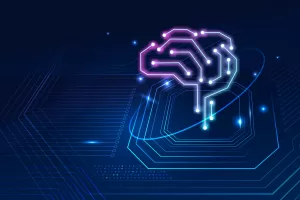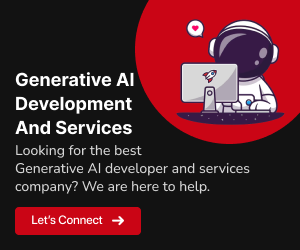In recent years, artificial intelligence has made significant strides, and one of the most exciting areas within AI is generative artificial intelligence (AI). Generative AI refers to a set of techniques and models that enable computers to generate new, creative content, such as text, images, and even music. In 2023, learning generative AI is a fantastic opportunity for those who are passionate about AI and wish to delve into the world of creative machine learning. This blog will guide you through the best roadmap to learn generative AI in 2023, providing you with a structured path to expertise in this thrilling field.
What is Generative AI?
Generative Artificial Intelligence (Generative AI) is a subset of artificial intelligence that focuses on creating models and algorithms capable of generating data, often in the form of text, images, or other types of content. Unlike traditional AI models that are designed for classification, prediction, or recognition, generative AI models are designed to create new, original content based on patterns and data they’ve been trained on.
These models can be incredibly creative and have a wide range of applications, including natural language generation, image synthesis, music composition, and more. One of the key principles in generative AI is the ability to learn and mimic the patterns and structures found in the training data, allowing the model to generate content that appears realistic and coherent.
Now, let’s embark on the journey to master Generative AI with a structured roadmap.
Master the Fundamentals of Machine Learning and Deep Learning:
Before diving into generative AI, it’s essential to have a solid understanding of machine learning and deep learning. Start by learning the basics of linear algebra, calculus, and statistics, which are foundational to machine learning. You can then proceed to study fundamental machine learning algorithms and frameworks like scikit-learn and TensorFlow.
Deepen Your Understanding of Neural Networks:
Generative AI heavily relies on neural networks, particularly recurrent neural networks (RNNs) and convolutional neural networks (CNNs). Learn how these networks work and understand their various architectures. You should also explore natural language processing (NLP) techniques and computer vision, as they are crucial for generative AI applications.
Python and Libraries:
Python is the go-to language for AI and machine learning. Familiarize yourself with Python and its libraries, such as NumPy, Pandas, Matplotlib, and Jupyter notebooks, which are indispensable for data manipulation, visualization, and experimentation.
Introduction to Generative Models:
Begin your journey into generative AI by learning about the foundational generative models like Autoencoders and Variational Autoencoders (VAEs). These models are a great starting point for understanding how AI can generate data.
Dive into Generative Adversarial Networks (GANs):
Generative Adversarial Networks, or GANs, are at the forefront of generative AI. They consist of two neural networks, a generator and a discriminator, that compete against each other to generate realistic data. Study GANs extensively and experiment with them. Resources like Ian Goodfellow’s book “Generative Deep Learning” are invaluable.
Explore Sequence-to-Sequence Models:
To work with generative AI in the context of NLP or text generation, delve into sequence-to-sequence models like LSTMs (Long Short-Term Memory) and their variations. This knowledge is crucial for tasks such as machine translation and text generation.
Get Hands-On with Transformers:
Transformers, especially models like GPT (Generative Pre-trained Transformer) and BERT (Bidirectional Encoder Representations from Transformers), have revolutionized the field of generative AI. Understand the architecture and applications of these models, as they are widely used in various NLP tasks.
Learn about Image Generation and Style Transfer:
For generative AI in computer vision, study image generation techniques using GANs and convolutional neural networks. Dive into style transfer algorithms that can transform ordinary images into artistic masterpieces.
Work on Real-World Projects:
The best way to consolidate your learning is to apply it to real-world projects. You could develop your text generators, create art with GANs, or build image recognition systems. Building a portfolio of projects will not only demonstrate your skills but also provide valuable experience.
Stay Updated with the Latest Research:
The field of generative AI is ever-evolving. Stay current with the latest research papers, conferences (e.g., NeurIPS, ICML, and ICLR), and online courses. Following researchers and practitioners on platforms like arXiv and Twitter can help you keep up with the latest developments.
Join Online Communities and Forums:
Participate in online communities and forums like GitHub, Stack Overflow, and AI-related subreddits. Collaborate with others, seek help when needed, and share your knowledge and experiences.
Pursue Advanced Specializations:
As you become proficient in generative AI, consider pursuing advanced specializations, such as reinforcement learning, which can add another layer of complexity to your AI skills.
Conclusion
Learning generative AI in 2023 is an exciting and promising endeavor. By following this roadmap and staying committed to your learning journey, you can become a proficient generative AI practitioner. Remember, patience and practice are key. As you hone your skills and gain experience, you’ll be well-prepared to contribute to the ever-expanding world of generative artificial intelligence. Good luck on your journey to becoming a generative AI expert in 2023!
Also Read : “Generative AI and the future of work in America“.


























Add Comment